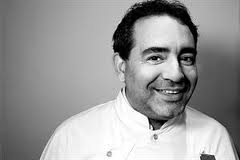Las Cabras, located in the trendy, restaurant-packed neighborhood of Palermo Hollywood, comes highly rated on many of the tourist websites such as Trip Advisor, etc. Here’s what I have to say about Las Cabras in short, it is by no means the best place to go for a steak in Buenos Aires, the service can be absolutely poor (and that’s compared to Buenos Aires standards) and most of the time it takes longer to get a table than it does to actually eat your meal. Having said this I can’t knock the fact that you can get an entire meal- I mean so much food that you won’t want to eat for days- for a really great price.
I first went to Las Cabras a couple years ago. I was with a group of 10 hungry friend and we were looking for a good but cheap parrilla to get what we would consider an argentine steak. We arrived around nine thinking that we had arrived early; which for Argentine standards we had. We were greeted with a long line of people the spanned what seemed like the entire block (this of course is a complete exaggeration but we were impatient and hungry). We elected a representative to go in and see about wait times. She reported back that the wait for such a large group would be at least an hour but with little deliberation we decided to wait it out because we were already here and the reviews were so good that we couldn’t miss it. An hour and a half goes by and we’re still waiting. Finally we got seated and we quickly placed our orders: beef and pinguinos (penguin shaped pitchers) of wine all around. Commence waiting round 2.
I ordered Bife de Chorizo and my friends followed suit minus the token vegetarian that we brought along. She ordered a mess of grilled vegetables, which is rare for a parrilla in Argentina to offer such a wide selection of veggies so that was a major plus. On that note they also stand out as a parrilla who offers salteña food. When our meals arrived we were pleasantly surprise by the mass quantities of food that ‘bife de chorizo’ came with. Not only did the beef come with rice, but it also came with french fries with a fried egg on top, a purée of squash and some grilled peppers.
We finished our meals, which we enjoyed and then had to play the ‘can you get the waiters attention to ask for the check’ game – the waiter won rounds 1 through 6 but eventually we overcame and we paid and were on our merry way to gallivant around the city. In summation, while the food is plentiful and the prices are very cheap, it’s not a place that the food itself would bring me back to time and time again. But, the atmosphere is lively and if you’re with a group of friends it’s a fun place to go and drink oodles of wine, hang out and have a cheap dinner.














 The difference between vacio and cuts like ojo de bife (a derivative of the rib-eye) lies with the distribution of the fat. Ojo de bife contains what we call marbling which is internal lines of fat that dissolve and add flavor to the meat when cooked. Vacio simply has an entire layer of fat along one side of the enormous cut. I say enormous because the flank steak is placed on the grill in its entirety. In my case, I watched the porteno (Buenos Aires resident) who was teaching me the way of the asado cook a 3 kilogram slab of vacio all at once.
The difference between vacio and cuts like ojo de bife (a derivative of the rib-eye) lies with the distribution of the fat. Ojo de bife contains what we call marbling which is internal lines of fat that dissolve and add flavor to the meat when cooked. Vacio simply has an entire layer of fat along one side of the enormous cut. I say enormous because the flank steak is placed on the grill in its entirety. In my case, I watched the porteno (Buenos Aires resident) who was teaching me the way of the asado cook a 3 kilogram slab of vacio all at once.



